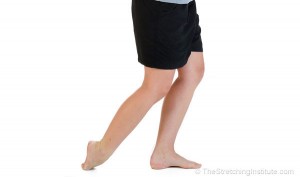A Cure for Shin Splints?
Before you embark on a new exercise program, or increase the intensity of your existing workout regimen, don’t end up like Peter Griffin- be aware of shin splints! Many of you may be familiar with what shin splints are, but for those that are not, I wanted to provide you with some background information, and ways to prevent and recover from this annoying and sometimes persistent overuse injury.
What Are they?
So first off, shin splints describe an injury that causes throbbing pain along the shinbone (tibia). This pain is a result of inflamed muscles, tendons, and membrane around the tibia bone. They are very common among runners and athletes that participate in stop-start sports such as tennis and basketball.
How Are They Caused?
Shin splints are caused by excessive force on the shin bone and connective tissues that attach the bone to the surrounding muscle. Running downhill, on uneven terrain, with worn out running shoes, and/or taking part in high-intensity agility-like exercises can cause shin splints. Another cause is when people go too intense too soon in their workout program. For instance, I used to run track and cross country in high school. After I graduated and went off to college, I took a break from running for a year or so and then decided to train for my first marathon. The first day of training I went all out and did almost 10 miles! Not the smartest idea because my muscles in my legs weren’t ready to take on that kind of workload and I ended up with shin splints that lasted about a month.
How to Fix?
So, you got the shin splints. How are you going to heal? Follow the RICE acronym:
REST: Your body needs time to heal. The worst thing you can do now is try to fight through this injury. It ain’t going away like that. Get your Netflix subscription and watch whole seasons of 24, Lost, and Game of Thrones while eating Ben and Jerry’s Ice Cream. I’m kidding! Try active resting- non-impact exercise such as biking or swimming.
ICE: The reason for the shin splint pain is that various muscles and tendons are inflamed/swollen. Use ice to bring the swelling and pain down. A good rule of thumb is to apply ice (wrapped in a towel) for 20 minutes of each hour for 24-48 hours.
COMPRESS: Compression sleeves can be very useful to help reduce swelling that results from the inflammatory process.
ELEVATE: Elevation aims to reduce swelling by using gravity to bring blood away from the injured area and back toward the heart.
How to Prevent?
Luckily you read this blog, I scared you straight, and now you want to find ways to prevent shin splints from occurring all together.
Here are various ways that you can prevent shin splints:
- Make sure you are using good shoes with strong support and padding.
- Avoid hard surfaces and uneven terrain when running.
- Ease into a workout program like an old man getting into a hot tub. Low intensity at first and as you advance, increase the intensity and duration.
- Make sure you are warmed up properly before exercise.
- STOP working out when you feel shin pain.
Do the following exercises to help build strength in the anterior tibialis (front portion of lower leg). If this muscle is strengthened, you will be able to take on more intense workouts without getting shin splints.
- Point and flex feet
- Spell out the alphabet with your big toes
- Stretch out your shins by placing the top of one foot on the ground and straightening the leg:

Tight calf muscles are a contributing factor when it comes to shin pain. Try these calf stretches:
- Put toe against wall, while keeping leg straight lean your body forward until you feel a slight stretch in your calf muscle.
- Get in a lunge type of stance with left leg forward (slightly bent) and right leg back (straight). Put hands on a wall or on the left quad.


